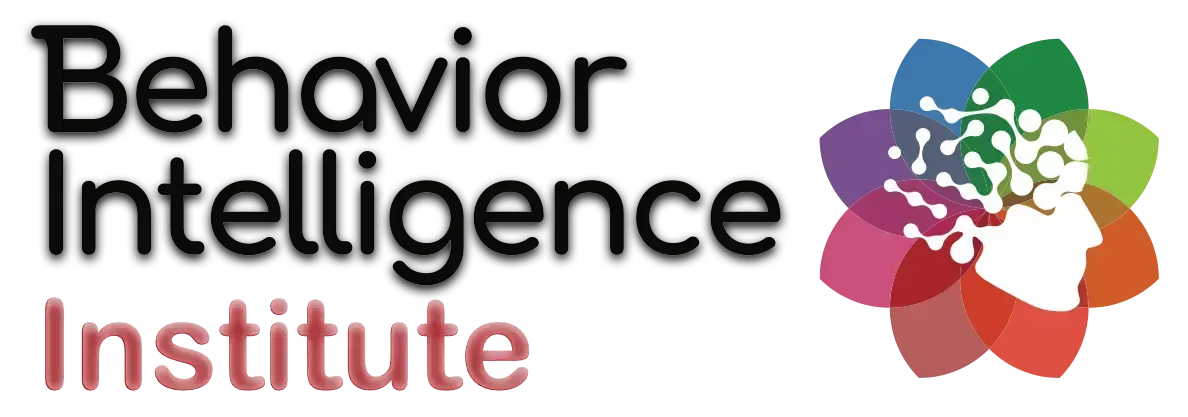Blog
Categories

Your Leadership Intelligence Roadmap: From Insight to Impact
From Awareness to Transformation
Over the years, I’ve seen many leaders who are brilliant thinkers but stuck in cycles of stress, reactivity, and frustration. They’ve read the books, attended the seminars, and taken all the notes—but nothing changes.
And that’s because information without action is entertainment.
Knowledge is powerful, but if it stays theoretical, it remains passive. Leadership Intelligence isn’t about what you know—it’s about what you apply. It’s the bridge between insight and implementation—where awareness becomes measurable impact.
That’s where Behavior Intelligence (BIQ) comes in.
Behavior Intelligence gives leaders a framework for understanding the underlying drivers of human behavior—what triggers our actions, sustains our habits, and reinforces our decisions. When you understand these mechanisms, you can transform not just yourself but the culture of your entire organization.
This is your Leadership Intelligence Roadmap—a process for moving from insight to impact, from observation to action.
Why Behavior Intelligence Is the Foundation of Leadership
Traditional leadership models focus heavily on strategy, communication, and decision-making. Those matter—but the truth is, behavior precedes strategy.
If we don’t understand why people act the way they do—our teams, our peers, and even ourselves—we end up managing symptoms rather than root causes.
Behavior Intelligence allows us to:
Recognize the patterns that drive results or resistance
Build emotional neutrality—responding instead of reacting
Replace judgment with understanding
Design environments that naturally support growth and accountability
The first step toward intelligent leadership is self-awareness. But awareness alone isn’t enough—it must evolve into consistent, observable change.
That’s what this roadmap is designed to help you achieve.
The Four-Step Leadership Intelligence Framework
Every transformation—personal or organizational—follows a cycle. The process I teach in my leadership programs and books is what I call the ODDD Method:
Observe, Decode, Design, Deploy.
Each stage builds on the last, guiding you from awareness to sustained change.
1. Observe – Seeing the Facts, Not the Impressions

The starting point of leadership growth is observation. Most people see through filters—assumptions, emotions, and biases. But true observation means noticing facts before forming judgments.
Develop the habit of daily observation.
Do it morning and evening—two short reflections a day:
What did I notice about my behavior today?
What reactions or triggers stood out?
What went well? What can I adjust?
If you miss a day, that’s okay. The goal isn’t perfection—it’s awareness. Allow yourself to be human.
When you document what you observe, you create data. And data gives you visibility into what’s working.
“You can’t improve what you can’t see—and you can’t see what you don’t measure.”
Observation turns the invisible into visible patterns, helping you move from assumption to clarity.
2. Decode – Cracking the Behavioral Code
Once you’ve gathered observations, the next step is to decode them. This is where you uncover why you and others behave the way you do.
Every behavior follows a loop:
Trigger → Pattern → Reward
When you identify the triggers and rewards behind your patterns, you can begin to change them deliberately.
Ask yourself the Three Whys:
Why did I react that way?
Why does this keep happening?
Why is this important to me or to them?
The goal isn’t to analyze endlessly—it’s to make sense of what’s driving your results.
You can deepen this step using tools like the AccuMatchBI assessment, which maps your unconscious behavioral biases and filters. It reveals how you naturally process information, make decisions, and interact with others—insight that helps you manage stress, improve communication, and build stronger leadership habits.
When you decode behavior at this level, you stop taking things personally. You start seeing them systemically.
3. Design – Building Your New Behavioral Blueprint
Once you understand your behavioral patterns, you can design new ones intentionally.
Think of this as creating your future leadership state:
What kind of environment will make this behavior stick?
What triggers can you change or replace?
What rewards will sustain this new habit?
Rewards don’t have to be financial. Often, recognition, progress, or simply seeing your team succeed can be far more powerful reinforcements.
To make change sustainable, build accountability structures:
Peer-to-peer accountability – Partner with someone who shares your growth goals.
Team check-ins – Review progress collectively.
Digital tools – Use BIQCoach or leadership tracking apps to automate reminders and progress tracking.
The key is consistency and visibility. When change is seen and measured, it sticks.
“Behavior becomes culture when it’s shared, practiced, and rewarded collectively.”
4. Deploy – Practice, Measure, and Refine
Now comes the most important step—deployment.
This is where we move from planning to practice. The only way to change behavior is through repetition.
Start small:
Pick one behavior to focus on per month.
That’s it. One.
In 12 months, you’ll have redesigned 12 key habits that directly impact your leadership and your organization’s culture.
Your deployment cycle looks like this:
Week 1 – Establish Your Baseline
Record your current patterns. Track observations. Identify one key area to improve.
If you can’t measure where you start, you won’t know if you’ve progressed.
Week 2 – Decode and Map It
Apply the Three Whys. Identify the triggers, behaviors, and rewards.
Use self-assessments or AccuMatchBI to uncover deeper patterns.
Week 3 – Design and Pilot
Implement your new behavior. Test it. Track your emotional responses and results.
Collect feedback from peers or your BIQ buddy.
Week 4 – Reflect, Measure, and Scale
Review your progress. What improved? What needs adjustment?
Document your insights, share them with your team, and prepare for the next cycle.
Each 30-day loop builds mastery—and mastery builds momentum.

Making Accountability Practical (and Human)
Accountability is what transforms intention into execution. But it must be human-centered, not punitive.
When people feel safe, they stay engaged. When they feel judged, they retreat.
Here’s how to make accountability work for your culture:
Use peer partnerships (BIQ Buddy system) to foster support.
Celebrate progress, not just completion.
Normalize mistakes—they’re data, not failures.
Encourage reflection—ask what they learned, not just what they did.
Accountability builds momentum through trust and transparency. And when leaders model it, teams follow.
The Obstacles to Progress (and How to Overcome Them)
Even with the best roadmap, leaders face common challenges. Here’s how to navigate them:
1. Waiting for perfect conditions
You’ll never have all the answers. The perfect plan doesn’t exist.
Start where you are—with what you know—and refine along the way.
2. Overcomplicating the process
Don’t wait for dashboards or new systems. Begin with a notebook and a pen.
Complexity delays progress. Simplicity builds momentum.
3. Isolation
You can’t hold yourself accountable in silence.
Share your goals with your peers, coach, or team. Speak them aloud. Visibility creates responsibility.
4. Lack of repetition
Leadership habits form through practice, not theory.
If you want transformation, repeat the cycle—over and over—until it becomes second nature.
“You can’t think your way to new behavior; you have to act your way there.”
Making the Invisible Visible
In leadership, impact often feels invisible. You can’t always tell if your efforts are changing the culture or influencing your team. That’s why measurement matters.
Track your behavioral KPIs—the human metrics that drive every business outcome:
Engagement and communication quality
Decision-making speed and clarity
Peer-to-peer feedback consistency
Emotional neutrality under pressure
When you measure these, you create visible standards. And when something becomes visible, it becomes actionable.
In one organization, we replaced traditional performance reviews with behavior review systems. We stopped measuring only outcomes and started tracking patterns. The result?
Team performance and KPIs improved—without ever focusing on the numbers directly. Because when you fix the behavior, the results follow.

Leadership Is Culture in Motion
A leader’s behavior sets the tone for the entire organization. Culture isn’t written in a handbook—it’s demonstrated in daily habits.
Every meeting, every conversation, every decision creates micro-signals about what’s valued and what isn’t.
Behavioral leadership is about making those signals intentional.
It’s influencing, not instructing.
It’s leading by example, not position.
It’s creating environments where accountability feels natural.
Influence, at its core, is behavioral—not positional. You don’t need to be the boss to lead. You need to model the behavior that invites others to follow.
The Long Game: Practice and Patience
Leadership transformation doesn’t happen in one leap—it happens in iterations.
You’ll make mistakes. You’ll skip a few days. You’ll face skepticism.
That’s all part of the process.
The key is to keep going, to stay curious, and to practice with compassion—for yourself and others.
Leadership Intelligence is not about perfection. It’s about progress that lasts.
From Insight to Impact
When you apply Behavior Intelligence consistently, you unlock three powerful outcomes:
Clarity – You understand what drives your actions.
Consistency – You align behavior with intention.
Culture – You inspire others to do the same.
That’s how you move from self-awareness to organizational transformation.
And that’s how insight becomes impact.
Take Action: Build Your Leadership Roadmap
If you’re ready to turn these ideas into measurable progress:
Join our BIQ.Network community – access free courses, mastermind groups, and a supportive environment of like-minded leaders.
Explore the new BIQCoach platform – manage accountability, track progress, and design leadership habits using real behavioral data.
Book a strategy call – if you’d like guidance creating your own roadmap, schedule a one-on-one consultation with me or one of our certified coaches.
Visit biqorg.com/events to start your next transformation cycle.
“Transformation doesn’t happen through information—it happens through consistent application.
One behavior at a time.”
Copyright 2021 AccuMatch Behavior Intelligence is a division of NLP Profiles Inc. | Privacy Policy



